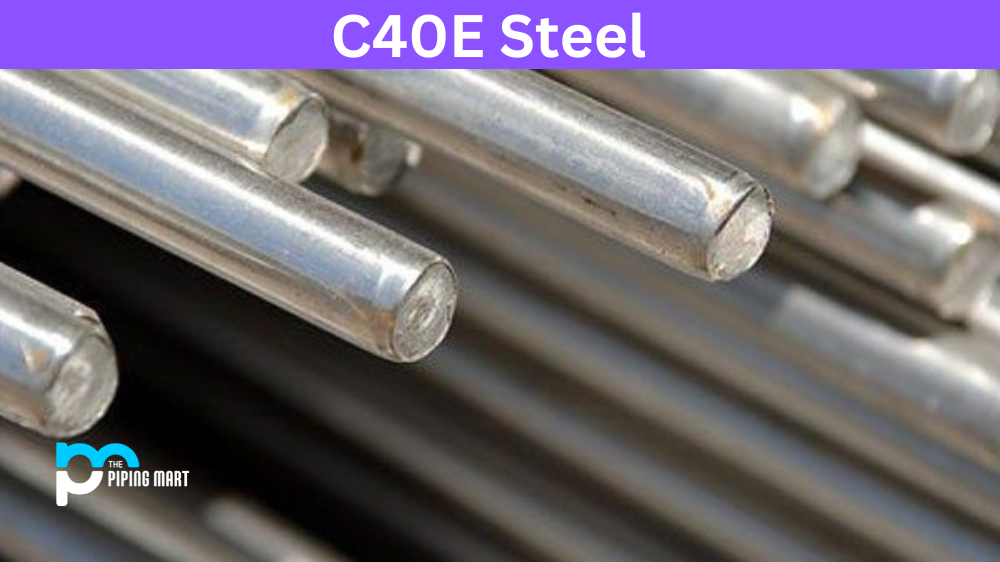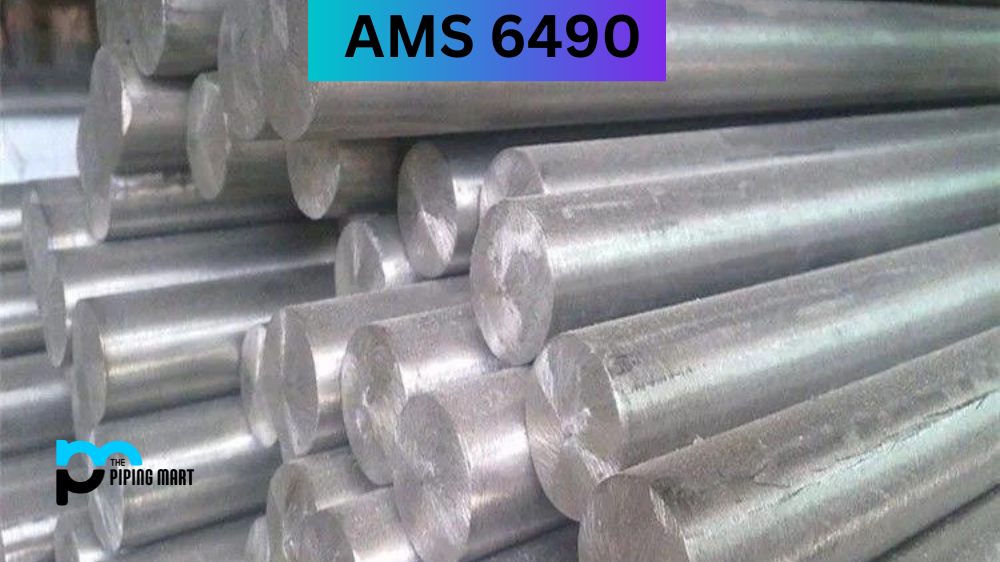UNS A91199 is a popular aluminum alloy due to its impressive range of properties and versatility. It is comprised of aluminum, copper, silicon, magnesium, and zinc and is known for its corrosion resistance, heat resistance, machinability, weldability, and workability. Let’s take a closer look at the physical properties, chemical properties, mechanical properties, uses, corrosion resistance, heat resistance, heat treatment, machining requirements, and welding instructions of Aluminium 1199.
What Forms is Aluminium 1199 Available at Piping Mart?
- Aluminium 1199 Bars
- Aluminium 1199 Tubes
- Aluminium 1199 Pipes
- Aluminium 1199 Bolts
- Aluminium 1199 Valves
- Aluminium 1199 Nuts
- Aluminium 1199 Tubing
- Aluminium 1199 Screw
1199 Aluminium Composition
| Element | Content (%) |
|---|---|
| Aluminum, Al | 99.99 min |
| Silicon, Si | 0.006 max |
| Magnesium, Mg | 0.006 max |
| Zinc, Zn | 0.006 max |
| Iron, Fe | 0.006 max |
| Copper, Cu | 0.006 max |
| Gallium, Ga | 0.005 max |
| Vanadium, Va | 0.005 max |
| Manganese, Mn | 0.002 max |
| Remainder (each) | 0.002 (each) |
Aluminium 1199 Physical Properties
UNS A91199 Brass has a 2.68 g/cm3 density with an electrical conductivity of 28 percent IACS. Its melting point is 566°C while its tensile strength is between 290-310 MPa. It has an elongation at a break of 10-12%.
| Properties | Metric | Imperial |
|---|---|---|
| Density | 2.70 g/cm³ | 0.0975 lb/in³ |
| Melting point | 660°C | 1220°F |
1199 Aluminium Chemical Properties
UNS A91199 contains the following elements in varying concentrations in order to achieve the desired characteristics: aluminum (90%), zinc (2%), magnesium (2%), silicon (1%), and copper (5%). This combination makes it resistant to corrosion and oxidation as well as providing strength for machining purposes.
Aluminium UNS A91199 Mechanical Properties
The mechanical properties of Aluminum 1199 are excellent due to its composition, which creates high hardness levels and exceptional ductility. It has good fatigue strength, which allows it to be used in complex aircraft components such as structural frames or landing gear parts. Furthermore, it also exhibits high stiffness, which means that it can be used in applications where weight savings are important such as sporting goods or aerospace components.
| Properties | Metric | Imperial |
|---|---|---|
| Tensile strength | 115 MPa | 16700 psi |
| Yield strength | 110 MPa | 16000 psi |
| Poisson’s ratio | 0.33 | 0.33 |
| Elastic modulus | 62 GPa | 8990 ksi |
| Shear modulus | 25 GPa | 3630 ksi |
| Elongation at break (@thickness 1.60 mm/0.0630 in) | 5% | 5% |
| Shear strength | 74 MPa | 10700 psi |
| Hardness, Brinell (@load 500 kg with 10.0 mm ball) | 31 | 31 |
1199 Aluminium Thermal Properties
The thermal properties of Aluminium / Aluminum 1199 alloy are tabulated below.
| Properties | Conditions | ||
|---|---|---|---|
| T (°C) | Treatment | ||
| Thermal conductivity | 243 W/mK | 25 | O |
1199 Aluminium Uses
Due to its superior properties, including corrosion resistance and heat resistance UNS A91199 can be used in a wide variety of applications, such as airframes for aircraft, automotive components, industrial machinery parts, oil pipelines, building structures, architectural panels, etc. Additionally, it can also be used for marine applications since it possesses excellent seawater corrosion capability.
Transportation
Aluminium 1199 is widely used in transportation due to its lightweight and durability. Aluminium is used in the construction of cars, trains, planes, and boats. Additionally, aluminum is used in the production of car parts, such as engine blocks and wheels.
Packaging
Aluminium is also used extensively in the packaging industry. Aluminium cans are used for packaging a variety of food and beverage products. Aluminium foil is also commonly used to package food items, as it helps to keep food fresh.
Construction
Aluminium 1199 is commonly used in the construction industry due to its strength and resistance to corrosion. Aluminium is used in the construction of buildings and bridges, as well as in the production of a variety of building materials such as windows and doors.
Electrical Applications
UNS A91199 is also used in a variety of electrical applications due to its conductive properties. Aluminium is used in the production of electrical wiring and cables, as well as in electronic devices such as computers and phones.
Machinery Manufacturing
Aluminium is also used extensively in machinery manufacturing due to its strength and resistance to wear and tear. Aluminium is used in the construction of a variety of machines, such as lathes and milling machines. Additionally, aluminum is often used in the manufacture of machine parts such as gears and bearings.
Corrosion Resistance
Aluminium Alloy offers excellent corrosion resistance compared to other alloys. This is mainly because of its zinc content which forms protective layers on exposure to air or water.
Heat Resistance
Aluminium 1199 also provides good heat resistance up to 300 degrees Celsius making it ideal for use in high-temperature situations like the exhaust systems on vehicles or industrial furnaces.
Heat Treatment
In order to improve the strength of this alloy, further heat treatment should be carried out after forming processes like extrusion or forging. During this process, temperatures between 500-550°C are maintained along with specific cooling conditions so that optimal mechanical properties are achieved while maintaining micro-structure stability.
Machining
Due to its high hardness levels, Aluminium Alloy needs special cutting tools when machined into parts like gears or blocks. High cutting speeds should also be maintained during the machining process.
Welding
The main welding method suitable for Aluminium UNS A91199 is MIG welding, as this will not degrade any mechanical properties due to the low temperatures involved in the process. Care must be taken when using other types of welding methods like TIG welding because higher temperatures could negatively affect the alloy’s structure.
Conclusion
Aluminium 1199 is an incredibly versatile alloy with excellent physical, chemical, and mechanical properties which makes it suitable for a wide range of applications, from structural frames for aircraft up until building structures. Its impressive array of traits, including good corrosion resistance, heat resistance, and ease of machining & welding, make it one of the most popular choices among professionals looking for reliable materials. With proper care & maintenance, this alloy can last many years without compromising on performance or quality standards, making it an ideal choice for anyone who needs their material solutions provided quickly & efficiently!

Meet Bhavesh, a seasoned blogger with a wealth of knowledge and experience. From metal products manufacturing to retail, Bhavesh has a diverse background in various industries and is dedicated to sharing his insights and expertise with readers.




